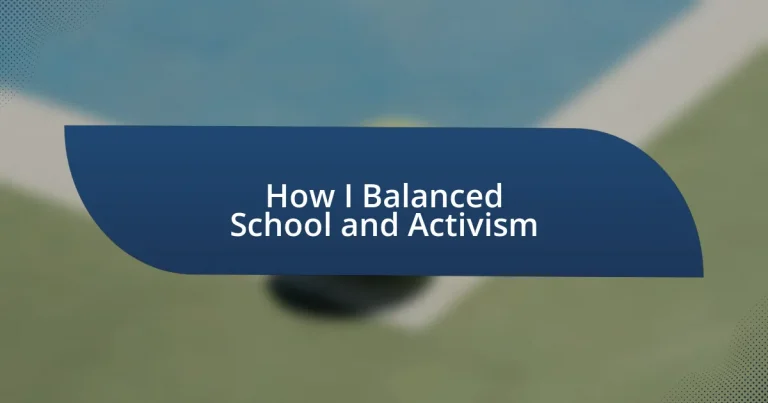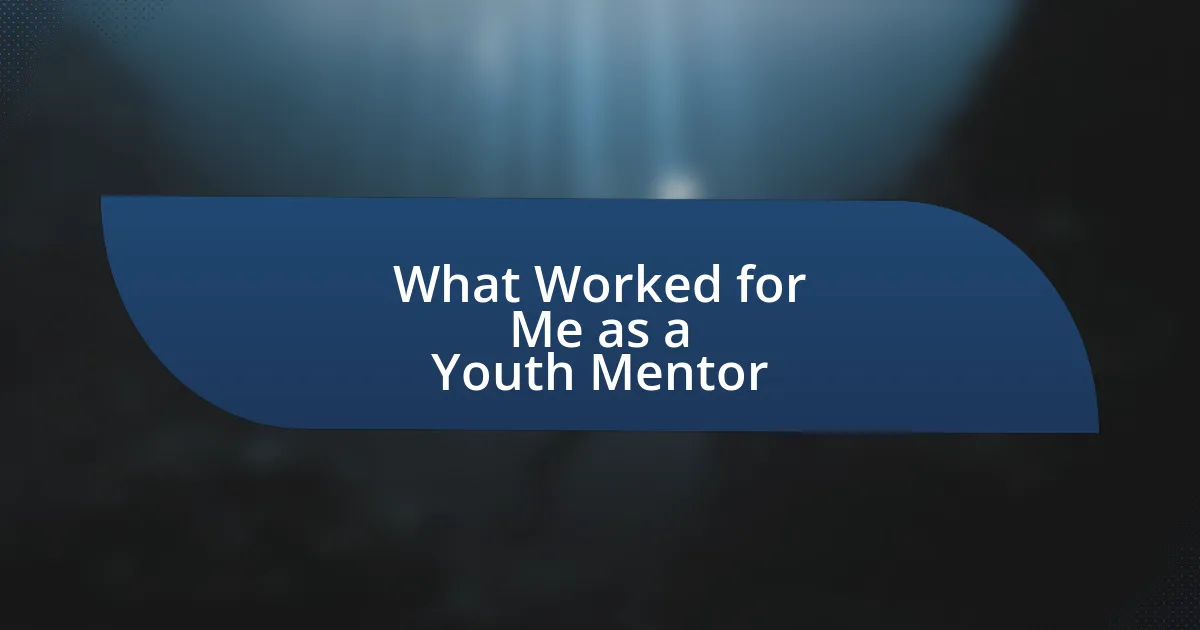Key takeaways:
- Balancing responsibilities involves setting clear boundaries and prioritizing well-being over obligations.
- Creating a daily schedule with time blocking and prioritizing tasks enhances control and productivity.
- Utilizing support networks, including friends and mentors, fosters motivation and alleviates stress.
- Practicing self-care and maintaining flexibility in priorities helps manage emotional exhaustion and workload.
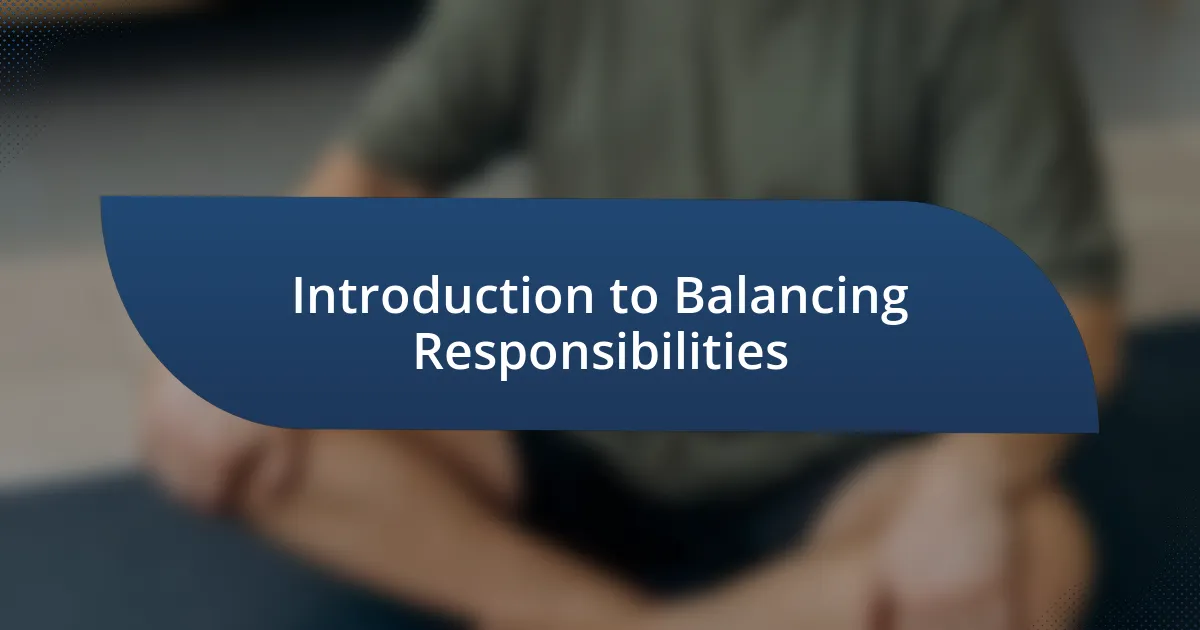
Introduction to Balancing Responsibilities
Balancing responsibilities can often feel like walking a tightrope. During my college years, I vividly remember those late nights spent juggling assignments and preparing for activism meetings. It made me wonder, how do some people make it look so effortless while others struggle?
At times, the pressure seemed overwhelming; I’d question whether I was stretching myself too thin. It’s a common thought, isn’t it? I found myself thinking about how to prioritize my time effectively. This led me to discover the importance of setting clear boundaries and being honest with myself about what I could handle without compromising my well-being.
Reflecting on my experiences, I learned that finding balance isn’t just about managing time; it’s also about understanding my limits and staying committed to my passions. There were moments when I had to choose between attending a rally or finishing an important paper. I realized that it’s okay to say no sometimes; prioritizing well-being is essential for sustaining both activism and academics.
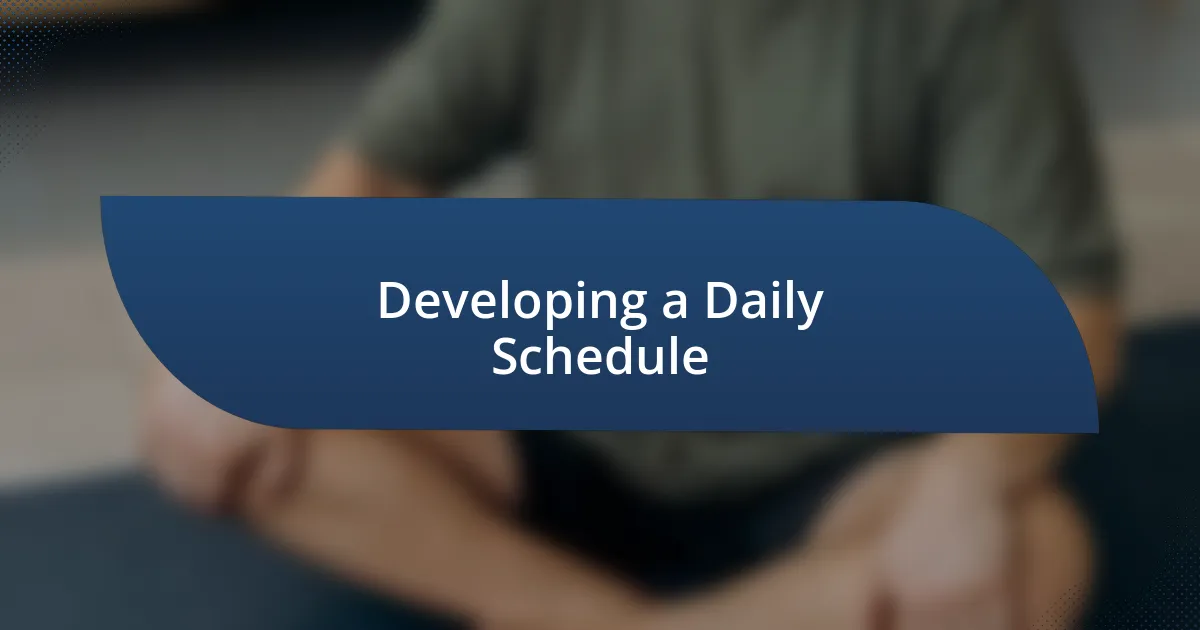
Developing a Daily Schedule
Creating a daily schedule became my anchor during those hectic college years. At first, I struggled to fit everything in, often feeling like I was racing against the clock. However, as I refined my approach, I discovered that mapping out my days helped me allocate time effectively. I began to feel more in control, and this structure provided a sense of calm amidst the chaos.
Here are some strategies that worked for me:
- Time Blocking: I dedicated certain hours exclusively to classes, studying, and activism.
- Prioritize Tasks: Each morning, I wrote down my top three priorities for the day and focused on completing those first.
- Incorporate Breaks: I scheduled short breaks between study sessions to recharge, which significantly improved my productivity.
- Be Flexible: Life happens, so I learned to adapt my schedule when unexpected events arose without feeling guilty.
By employing these techniques, I gradually transformed my daily routines. It wasn’t just about cramming everything in; it became an empowering practice that fueled my academic and activist passions.
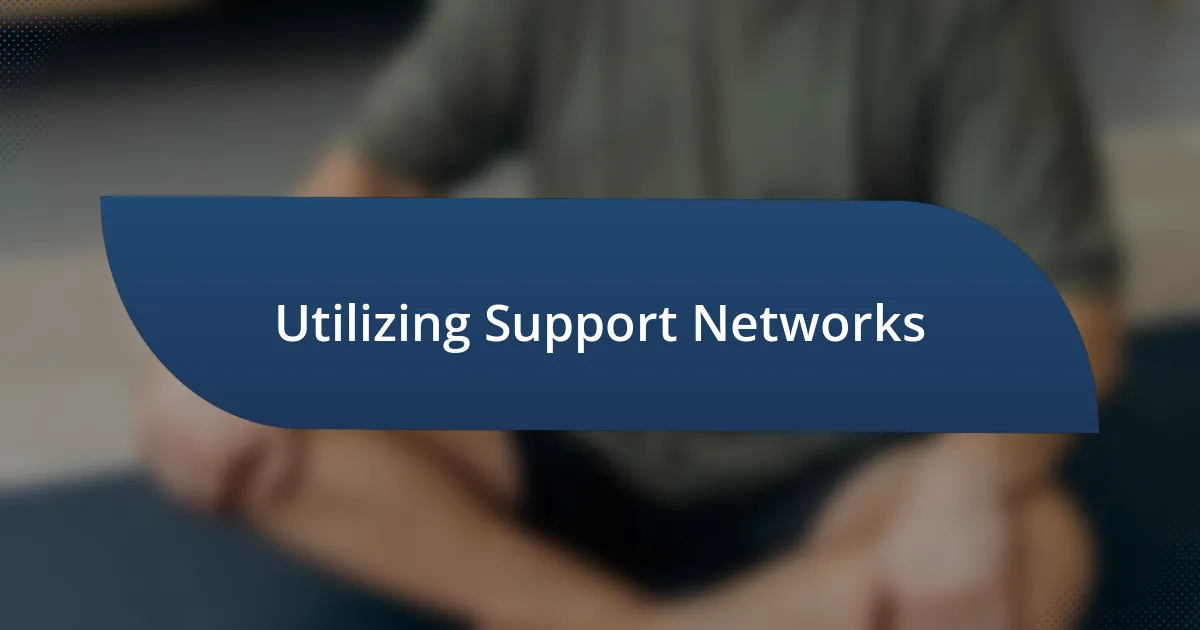
Utilizing Support Networks
Utilizing support networks was essential for me as I navigated both school and activism. I vividly remember sitting down with friends who shared my passion for social change; we often brainstormed ideas and provided each other with encouragement. It’s incredible how just having someone to share your thoughts with can lighten the load, turning stress into a collaborative effort.
I realized the importance of not only leaning on friends but also reaching out to mentors and organizations. For instance, I sought guidance from faculty members who understood my activism goals. They offered invaluable advice that combined academic and real-world applications, helping me see the bigger picture in both realms, which made a significant difference.
Moreover, joining student-led groups created a sense of camaraderie. Collaborating on projects fostered accountability that kept me motivated. There were days when I felt overwhelmed, yet knowing I was part of a supportive community reminded me that I wasn’t alone in my journey. This synergy between academics and activism became a powerful motivator, allowing me to thrive.
| Type of Support | Benefits |
|---|---|
| Friend Support | Encouragement, shared ideas, reduced stress |
| Mentorship | Guidance, practical advice, broader perspective |
| Community Groups | Accountability, motivation, sense of belonging |
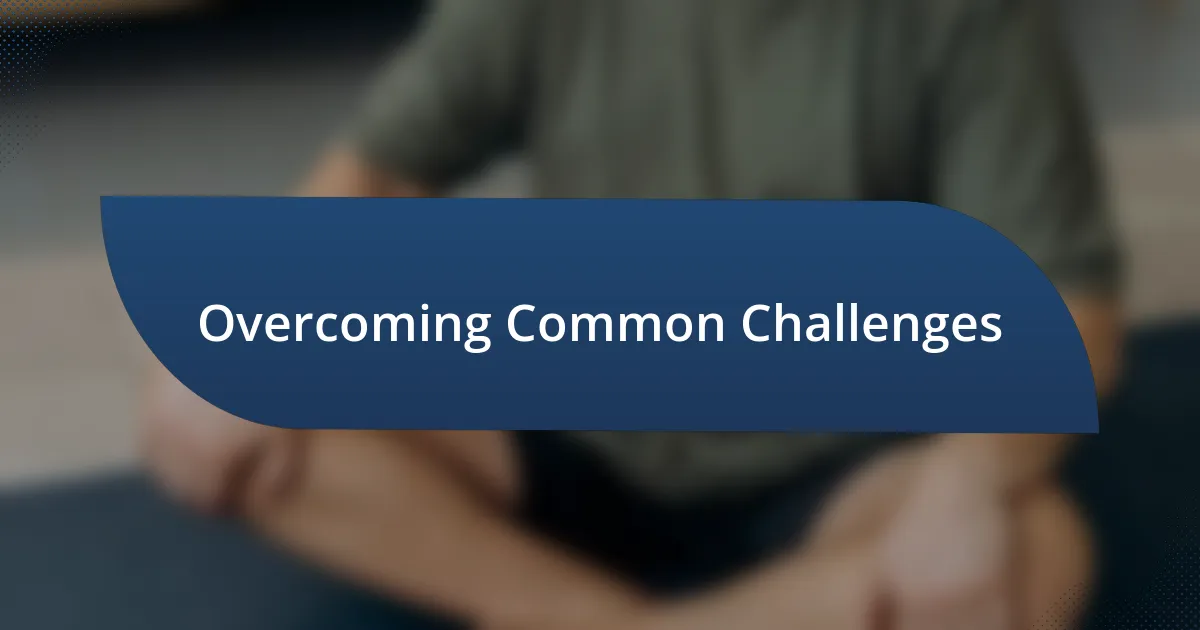
Overcoming Common Challenges
One common challenge I faced was managing my time effectively. There were moments when I’d look at my to-do list and feel completely drained, questioning how I would fit everything in. I started using a planner, breaking down my tasks into smaller, manageable steps, which not only eased my anxiety but also provided a clear roadmap for each day.
Another significant hurdle was coping with the emotional exhaustion that activism can bring. There were times I felt disheartened after hearing about setbacks in the causes I cared about. I learned to practice self-care, setting aside quiet moments to recharge. Simple activities like taking a walk or journaling made a profound difference in keeping my passion alive while preventing burnout.
Finally, balancing the pressures of school and activism often left me wondering if I was dedicating enough attention to either one. I embraced a mindset of flexibility, understanding that some weeks I might need to prioritize academics over activism and vice versa. This approach not only reduced my stress but also allowed me to appreciate each moment I spent, whether in class or at a rally, knowing that both were shaping my growth.
